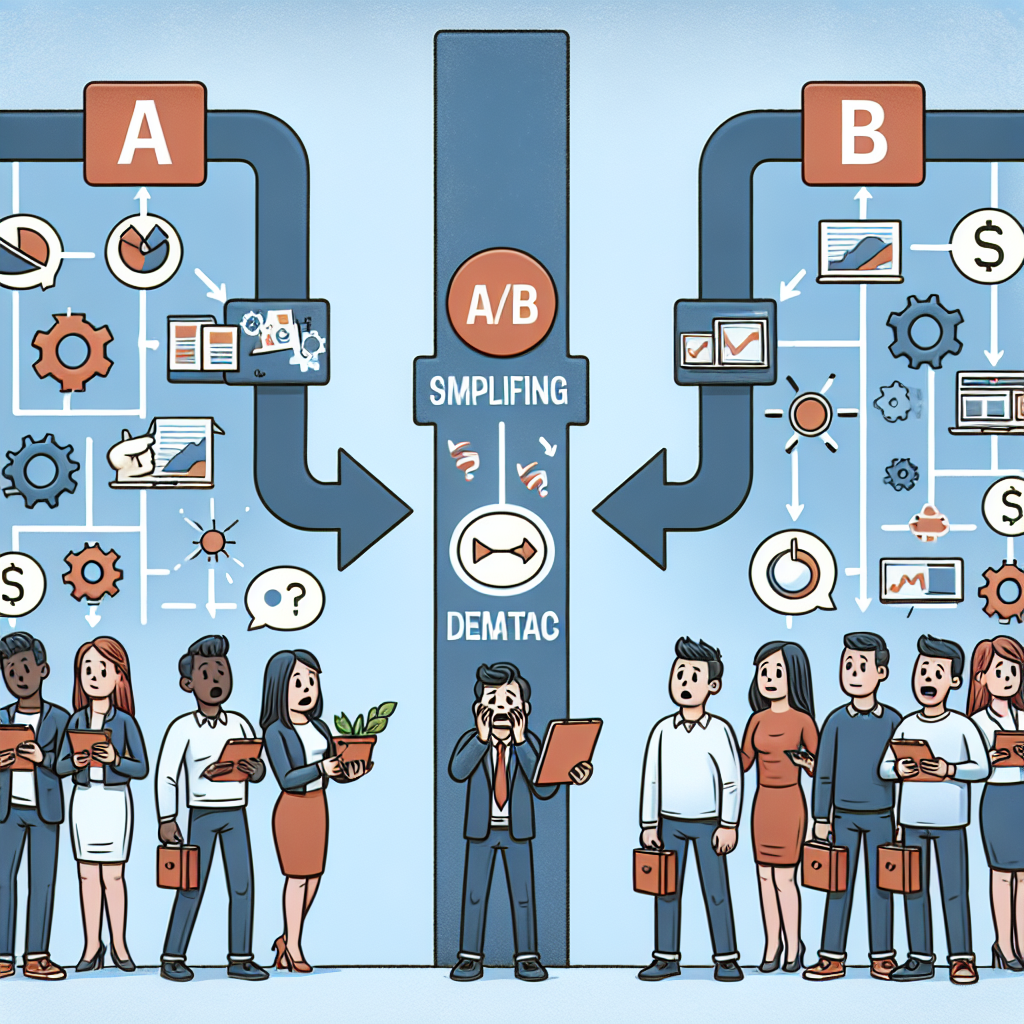Understanding A/B Testing
What is A/B Testing?
When I first heard about A/B testing, I thought it was some fancy tech term for a complex process. Turns out, it’s actually quite simple! A/B testing involves comparing two versions of a webpage or email against each other to determine which one performs better. The beauty of it lies in its straightforwardness: you change one element, test, and see what works.
This process helps marketers like us to make data-driven decisions based on real user behavior rather than guesses. It’s like having a secret weapon in your marketing toolkit! The key is to test just one variable at a time to get precise results. Trust me, you’re going to love the clarity it brings.
Not only does A/B testing reduce guesswork, but it also offers solid evidence for your decisions. Imagine being able to say, “We changed the button color and saw a 20% increase in clicks!” It’s a powerful thing when you can back up your choices with actual data.
Setting Up Your A/B Test
Choosing the Right Variable
Now that I’ve convinced you how cool A/B testing is, let’s get down to business! The first step is picking what you want to test. It could be anything—headlines, images, or even the call-to-action button. The trick, however, is to choose something that you think will impact user experience the most.
From my experience, it’s best to stick to one variable at a time. Say you want to test your email subject lines. Instead of changing the design and wording simultaneously, focus on tweaking just the subject line. This focus allows you to pinpoint what works and what doesn’t with accuracy.
Remember, each small change can lead to big results. So, take your time in selecting the variable and make sure it aligns with your overall marketing goals. Whether you’re chasing more clicks or conversions, the right choice can significantly impact your outcomes.
Implementing the A/B Test
Creating Variations
After picking your variable, it’s time to create variations. This part is where the fun really begins! I usually draft one version—let’s call it A—that has all the original elements. Then comes version B, where I incorporate the changes I want to test.
For instance, if I’m changing the color of a button, I’ll create two versions of the same landing page. One has the original red button (A), and the other features a vibrant green button (B). This way, I can accurately gauge which one resonates more with my audience.
Also, don’t forget to keep other factors consistent to eliminate any noise in your results. Same layout, same text, just a different button color, and watch how it performs. It’s almost like a science experiment, and I’m always excited to see which version comes out on top!
Analyzing Results
Interpreting Data
Once you’ve run your tests for a sufficient time, it’s time for one of the most exciting parts—analyzing the results! This is where you uncover the insights you’ve been waiting for. I usually keep an eye on metrics like click-through rates, conversion rates, or any other relevant KPIs.

The numbers can sometimes be confusing, but don’t let them intimidate you. Look for clear winners or definite patterns. If one version significantly outperformed the other, that’s a clear indicator of what your audience prefers.
Document everything too! Not just the outcomes but also the reasons behind the results. What did you learn? This can be invaluable for future tests and campaigns, and helps you avoid any repeated mistakes. Trust me, keeping track provides a treasure trove of insights you can refer to down the line.
Iterate and Optimize
Continuous Improvement
Last but not least, the beauty of A/B testing is that it fosters an environment of continuous improvement. So, once you’ve found a winning version, don’t just stop there. Dive deeper, and keep optimizing—a good marketer never rests on their laurels!
Consider running a new test with variations of your winning version. This could be changing the text on the button or the image on your landing page. The goal is to keep refining your marketing efforts until you hit that sweet spot where everything clicks.
I like to think of A/B testing as a never-ending journey. Each test offers new insights and opportunities to enhance your marketing strategy. Plus, with each tweak, you’re building a stronger relationship with your audience by genuinely catering to what resonates with them.
FAQs
1. How long should I run an A/B test?
It depends on your traffic! Generally, aim for at least one week to gather enough data. But for smaller audiences, a little longer might be necessary to achieve statistically significant results.
2. Can I test more than two variations?
Absolutely! While A/B tests typically compare two versions, you can run A/B/C tests, or even more. Just ensure you don’t overwhelm yourself or complicate the analysis!
3. How do I know if my test results are statistically significant?
There are various online calculators and tools that can help with this. Generally, look for a confident margin of error—most marketers aim for 95% confidence to accept the results as significant.
4. What’s the most critical aspect of A/B testing?
The most important part is defining a clear goal before starting. Know what you’re testing for and ensure that your variations are aligned with that goal for the best results.
5. What if both versions perform equally?
That’s a great question! It can happen sometimes. In such cases, consider testing other elements or try combining aspects of both versions to craft a new one that may perform better!


